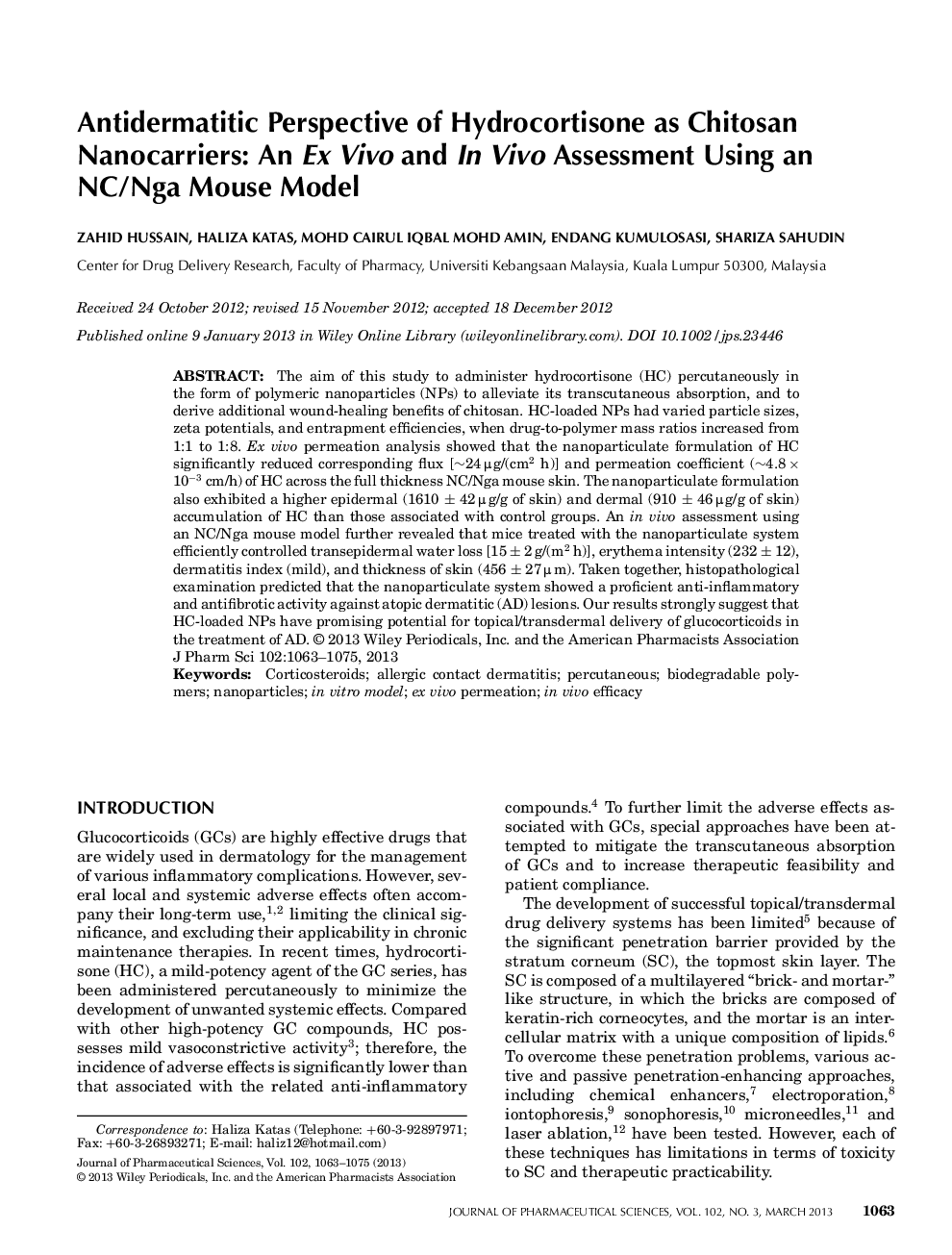| Article ID | Journal | Published Year | Pages | File Type |
|---|---|---|---|---|
| 10162756 | Journal of Pharmaceutical Sciences | 2013 | 13 Pages |
Abstract
The aim of this study to administer hydrocortisone (HC) percutaneously in the form of polymeric nanoparticles (NPs) to alleviate its transcutaneous absorption, and to derive additional wound-healing benefits of chitosan. HC-loaded NPs had varied particle sizes, zeta potentials, and entrapment efficiencies, when drug-to-polymer mass ratios increased from 1:1 to 1:8. Ex vivo permeation analysis showed that the nanoparticulate formulation of HC significantly reduced corresponding flux [~24 μg/(cm2 h)] and permeation coefficient (~4.8 Ã 10â 3 cm/h) of HC across the full thickness NC/Nga mouse skin. The nanoparticulate formulation also exhibited a higher epidermal (1610 ± 42 μg/g of skin) and dermal (910 ± 46 μg/g of skin) accumulation of HC than those associated with control groups. An in vivo assessment using an NC/Nga mouse model further revealed that mice treated with the nanoparticulate system efficiently controlled transepidermal water loss [15 ± 2 g/(m2 h)], erythema intensity (232 ± 12), dermatitis index (mild), and thickness of skin (456 ± 27 μm). Taken together, histopathological examination predicted that the nanoparticulate system showed a proficient anti-inflammatory and antifibrotic activity against atopic dermatitic (AD) lesions. Our results strongly suggest that HC-loaded NPs have promising potential for topical/transdermal delivery of glucocorticoids in the treatment of AD. © 2013 Wiley Periodicals, Inc. and the American Pharmacists Association J Pharm Sci 102:1063-1075, 2013
Keywords
Related Topics
Health Sciences
Pharmacology, Toxicology and Pharmaceutical Science
Drug Discovery
Authors
Zahid Hussain, Haliza Katas, Mohd Cairul Iqbal Mohd Amin, Endang Kumulosasi, Shariza Sahudin,
